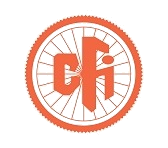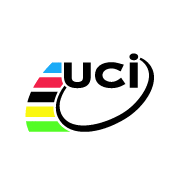
Cycling Form Or Cycling Technique
A comfortable and efficient riding form is the key element in the bike-body interaction. Your body and bike must fit together and work together in near-perfect harmony for you to be efficient, comfortable, and injury-free. The more you ride, the more essential this gets. Here are some tips to improve your form:
Arms: Keep your elbows slightly bent and relaxed to absorb shock and prevent veering when you hit a bump or brush another rider. Hold arms in line with your body, not splayed to the side, to be more compact and aerodynamic.
Upper Body/Shoulders: Don't be rigid, but do be fairly still. Imagine the energy wasted by rocking side to side with every pedal stroke on a 25-mile ride. Save it for pedaling. Also, beware of creeping forward on the saddle and hunching your shoulders. There's a tendency to do this when pushing for more speed. Shift to a higher gear and stand periodically to prevent stiffness in your hips and back.
Head and Neck: Resist the temptation to put your head down when you're going hard or getting tired. It takes just a second for something dangerous to pop out of nowhere. Occasionally tilt your head to one side and the other instead of holding it dead center. Change your hand location to reposition your upper body and give your neck a new angle.
Hands: Prevent finger numbness by moving your hands frequently. Grip the bar firmly enough to keep hands from bouncing off on unexpected bumps, but not so tightly that it tenses your arms. For the same safety reason, keep your thumbs wrapped around the bar instead of resting on top. Move to the drops for descents or high-speed riding, and the brake lever hoods for relaxed cruising. On long climbs, grip the top of the bar to sit upright and open your chest for easier breathing. When standing, hold the lever hoods lightly and sway the bike side to side in synch with your pedal strokes, directly driving each pedal with your body weight.
Back: A flat back is the defining mark of a stylish rider. Anatomy and flexibility have a lot to do with how flat you can get. Once you have the correct reach, work on flattening your back by imagining touching the top tube with your belly button. This helps your hips rotate forward. You don't want to ride this way all of the time, but it'll help you get more aero when you need to.
Butt: By sliding forward and backward on the saddle you can bring some muscles into play while resting others. Moving forward emphasizes the quadriceps muscles on the front of the thighs, while moving back highlights the hamstrings and glutes.
Feet: To make cycling easier on your knees, shoe cleats must put your feet at their natural angle.In order to minimize knee and hip pain in the early season, take it easy for the first couple of weeks. Pedal with low resistance and a cadence of 80-90rpm allowing your body to adjust again to road riding, and possibly a slightly new bike position. Also, try to minimize hard riding or hill work for the first few weeks.
* Content Courtest : Mojo


